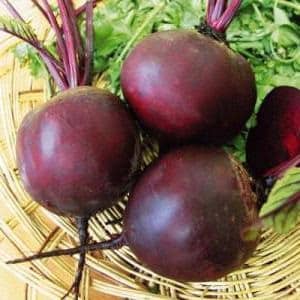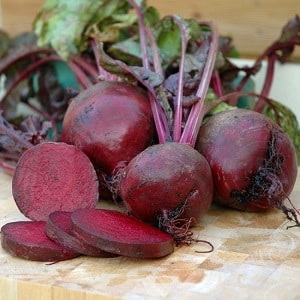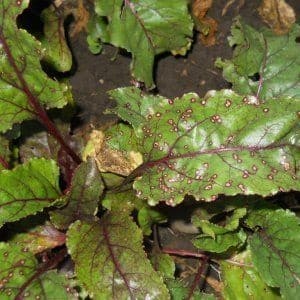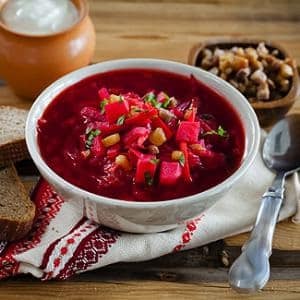One of the most popular varieties among farmers is Pablo beets.
In ancient Persia, beets were considered a symbol of discord and quarrels, and Mediterranean countries took the vegetable as a cure for many diseases. Today, beets are a tasty, healthy and easy-to-grow vegetable that is cultivated by most gardeners.
In the article we will look at one of the beet varieties called Pablo. Why summer residents love this vegetable so much and how to get a good harvest, we will find out further.
Description of the variety
The variety is a mid-late variety, the first harvest is obtained after 2.5-3 months. Pablo f1 is a hybrid and therefore has excellent immunity to adverse weather. The variety is not picky about soil and does not require special care. It performs well in central Russia and in the northern regions.

Origin and development
The Pablo variety is the result of the work of agronomists from Holland, namely the company Bejo Zaden. The company was founded back in 1899 and is distinguished by its high quality seeds. Today, Bejo Zaden is one of the leaders in vegetable breeding. The beet variety Pablo is no exception.
Distinctive features
The bushes are small, the oval foliage is light green in color.. Violet veins are visible on the surface, and the edges of the leaves are wavy. The hybrid is resistant to bolting, that is, additional shoots in the form of arrows do not appear on the stems. This fact makes caring for the plant much easier.
Read also:
Rules for obtaining a rich beet harvest
Fruit characteristics and yield
The vegetables themselves are neat and have an excellent presentation.. The diameter of one is about 15 cm, the maximum weight is 180 g. The shape is round and even. The skin is dense, but smooth, and has a thin tail. The color is an attractive, rich burgundy red. Beets are stored for a long time, do not rot or crack. From 1 sq. m harvest about 5-8 kg of vegetables.
Interesting! The first mentions of beets in our country date back to the 10th century. It was at this time that the vegetable was brought from Byzantium. However, the product began to be actively used only after several centuries.
How to grow
Growing a good harvest of beets is quite simple, especially if you follow well-known agrotechnical rules. Let us consider further the ways in which vegetables are planted in the garden and what growing secrets are used.
Planting by seeds
 First, prepare the land. Beets grow well after potatoes, cabbage or cucumbers. Loose and airy beds would be an excellent place. Dig up the soil and add fertilizer to it. Organic matter protects the plant from diseases, and mineral complexes affect the quality of the future harvest. Gardeners also advise adding dolomite flour to the soil at the rate of 200 g per 1 square meter. m. It reduces the acidity of the soil, which is beneficial for the plant.
First, prepare the land. Beets grow well after potatoes, cabbage or cucumbers. Loose and airy beds would be an excellent place. Dig up the soil and add fertilizer to it. Organic matter protects the plant from diseases, and mineral complexes affect the quality of the future harvest. Gardeners also advise adding dolomite flour to the soil at the rate of 200 g per 1 square meter. m. It reduces the acidity of the soil, which is beneficial for the plant.
Start preparing seeds. If you purchased seeds in advance, then store them only in a dry place at a temperature of 15 to 25 degrees and at an air humidity of no more than 60%. Test the seeds for germination by placing them in a saline solution for a couple of minutes. Those seeds that do not sink are unsuitable for planting.
Then treat the seeds with Maxim PLUS. The product protects beets from diseases, stimulates the development of the root system, and improves germination.
The Pablo variety is planted in early or mid-April.. The distance between the beds should be at least 30 cm, and between the bushes at least 7-10 cm. The seeds are placed in pre-prepared holes about 5 cm deep. After which a layer of humus or straw is placed on the beds. The first shoots appear after two weeks from planting.
Planting seedlings
For the seedling method, the seeds are germinated. To do this, place the disinfected material on damp, warm gauze or cotton wool. The optimal temperature for germination is 20 degrees. Within a few days, the seeds will begin to develop and produce the first shoots.
Next, prepare the soil for seedlings.. An excellent option would be ready-made soil “Krepysh”, which is distinguished by its nutritional composition and availability. The soil contains peat, which is necessary for the full development of the vegetable. The soil is loose, without lumps and larvae.
In addition to land, you will need a container. They can use anything: boxes, boxes, pots, containers. The main thing is that the container is dry and clean. Soil is poured into the container and grooves are made 1 cm deep. Sprouted seeds are placed in them and sprinkled with soil on top, after which they are watered with warm water from a spray bottle. To create a greenhouse effect, seedlings are covered with film or glass.
Important! The air temperature for seedlings should be 12-17 degrees. If the air is too warm, the seedlings stretch out. Also watch the amount of moisture, its excess will lead to rotting and disease. Once every two weeks, fertilize the seedlings with ash or Fertika. The preparations supply young shoots with the necessary vitamins for further development.
Care
 The Pablo variety loves water. The peculiarity of watering is that moisture should get not only under the roots, but also on the tops. For 1 sq.m takes about 10-15 liters of water. If the summer is dry and hot, then the amount of watering is increased. Also loosen the beds regularly to avoid the formation of a hard crust and remove weeds. To do this, use sodium nitrate spraying, which protects the crop from weeds.
The Pablo variety loves water. The peculiarity of watering is that moisture should get not only under the roots, but also on the tops. For 1 sq.m takes about 10-15 liters of water. If the summer is dry and hot, then the amount of watering is increased. Also loosen the beds regularly to avoid the formation of a hard crust and remove weeds. To do this, use sodium nitrate spraying, which protects the crop from weeds.
Throughout the entire ripening period, Pablo needs feeding and fertilizer.. Potassium salt, which is used together with ammonium nitrate, is recognized as an excellent remedy. For 1 sq. m takes about 20 g of composition. Beets are fed mainly in the early morning before watering. Also use potassium permanganate, which compensates for the lack of manganese and potassium. To make the fertilizer you will need 5 liters of warm water and 0.5 teaspoon of the drug. Beets are watered with this mixture 5 times per season.
Important! If the leaves turn red, it means the plant does not have enough sodium. Simple salt is suitable to eliminate the problem. To prepare the solution you need 10 liters of water and 10 tablespoons of salt. For 1 sq. m takes 0.5 liters of solution.
Features of cultivation and possible difficulties
 Often beets are sown too thickly for fear of low seed germination. In this case, the bushes take vitamins and minerals from each other, and the roots do not have enough space to develop. To prevent this situation, gardeners thin out the beds. If this is not done, they will be small and deformed.
Often beets are sown too thickly for fear of low seed germination. In this case, the bushes take vitamins and minerals from each other, and the roots do not have enough space to develop. To prevent this situation, gardeners thin out the beds. If this is not done, they will be small and deformed.
The first thinning is performed when the first two leaves appear on the bush. In the garden bed, leave 2-3 cm between plants. The beets are thinned again after the formation of 5 leaves, leaving about 6 cm. Extreme thinning is carried out in the first half of August, leaving 8 cm between the bushes. It is better to carry out the procedure after watering or rain.
For good development, the Pablo variety requires ash root supplements.. They are especially effective in early August, when active fetal development begins. In addition to ash, beets respond well to the preparation "Agricola", which is applied in July and August. The mixture ensures the safety of the roots and improves the taste of beets.
It will be interesting:
Diseases and pests
Although the hybrid has high immunity, sometimes the plant gets sick with cercospora.. The disease mainly affects the leaves, and only occasionally the stems. The first signs appear in early June; brown-red spots form on the leaves. Over time, the spots increase in size and a gray coating appears.
 Causes of cercospora blight - weeds and old plants, on which the causative agents of the disease—fungal spores—are stored. If measures are not taken in time, vegetables begin to rot and lose their elasticity. As a preventive measure, gardeners advise using only high-quality seeds, maintaining proper care, and applying fertilizers in a timely manner. If the disease has already appeared, treat the bushes with the effective drug Epin.
Causes of cercospora blight - weeds and old plants, on which the causative agents of the disease—fungal spores—are stored. If measures are not taken in time, vegetables begin to rot and lose their elasticity. As a preventive measure, gardeners advise using only high-quality seeds, maintaining proper care, and applying fertilizers in a timely manner. If the disease has already appeared, treat the bushes with the effective drug Epin.
Among the insects, the beds are attacked by insects with the interesting name beet weevil. These are small black bugs that appear from the very beginning of planting beets in the garden. Weevils live in soil and weeds.
Insects eat weak roots and young shoots, as a result, the bushes that have not matured fade. The fight against weevils involves constant care and preventive measures. Be sure to disinfect the soil before sowing, choose only clean and nutritious areas for vegetables.
To prevent undesirable phenomena, experienced gardeners recommend liming the soil.. This will improve the quality of the soil and replenish the lack of nitrogen, phosphorus and calcium. Thanks to lime fertilizers, the roots become powerful and the stems strong. The best period for liming is autumn or spring. The procedure is carried out once every 5-6 years. It is liming that prevents the occurrence of many diseases.
Harvesting and application
 Remove beets from the garden after the roots have clearly appeared on the soil surface.. If you doubt how ready a vegetable is for harvesting, dig up one root vegetable and evaluate its degree of ripeness. As a rule, the harvest is harvested from September to October.
Remove beets from the garden after the roots have clearly appeared on the soil surface.. If you doubt how ready a vegetable is for harvesting, dig up one root vegetable and evaluate its degree of ripeness. As a rule, the harvest is harvested from September to October.
Dig up the beets from the beds so as not to damage the roots. Then shake the root vegetables off the ground, spread them on the ground and dry well in the sun. Next, place the harvested crop in a dry and dark place. The Pablo variety stores well, especially if you put the vegetables in boxes and cover the top with a thick cloth.
A huge number of tasty and healthy dishes are prepared from the product.. Vinaigrette is perfect for dietary nutrition, as is beet juice, which improves the functioning of the digestive system. Beetroot caviar is a delicious dietary dish, and the famous salad of beets and prunes helps you lose weight.
Interesting! Real borscht cannot be prepared without beets. Since ancient times, soup was prepared without potatoes, adding only cabbage and beets, and apple or cherry juice was added to add sourness. In Jewish national cuisine, borscht is cooked only in chicken broth, and beets are not fried, but boiled.
Plus, beets are an excellent natural antiseptic.In addition, beet juice cleanses the blood.The product also has a diuretic and antipyretic effect and anti-inflammatory properties. The vegetable improves the elasticity of blood vessels.
Advantages and disadvantages of the variety
The Pablo variety has long won the love of many gardeners. First of all, it is valued for its ease of care. With minimal costs, summer residents get maximum returns. The only maintenance required is regular watering, weeding, fertilizer and thinning. Otherwise, Pablo is easy to care for, so even a beginner can get excellent results.
The vegetable produces a harvest both in the south and in the northern regions, which is especially appreciated by gardeners in the Urals and Siberia. Pablo is not picky about soil composition and tolerates heat, frost, fog, and high humidity well. Beets have excellent storage qualities, are used by housewives in preparing dishes, and contain a supply of vitamins and minerals.
The Pablo variety has no significant disadvantages. However, please note that beets contain a lot of sugar. Because of this, beets are not recommended for diabetics or people with gastrointestinal diseases. Only moderate consumption of beets will be beneficial.
Farmer reviews
 Many gardeners know about the Pablo variety. Some summer residents have already tried to plant vegetables on their plots, while others are only planning planting for the next season. What do Russian farmers say about Pablo?
Many gardeners know about the Pablo variety. Some summer residents have already tried to plant vegetables on their plots, while others are only planning planting for the next season. What do Russian farmers say about Pablo?
Alexander, Saratov: “I only plant hybrids; they rarely get sick and produce a stable harvest. Pablo always produces beautiful and smooth vegetables, some of which can be stored for six months. The taste is sweet, the flesh is dense, juicy".
Marina, Orel: “I tried to plant Pablo’s beets with seedlings. After 10 days, the sprouts began to actively develop.Despite the cool summer, the harvest exceeded all expectations. I now advise all gardeners to plant Pablo’s beets.”.
Ruslan, Tyumen: “In my opinion, the Pablo variety has an average yield compared to other mid-late varieties. The taste is slightly bitter, although I watered and fertilized the beds according to all the rules.".
Conclusion
If you have not yet tried to grow Pablo beets in your garden, we advise you to think about it. After all, the vegetable has excellent characteristics and stable yield.
It is not for nothing that for several centuries beets have been widely used not only in cooking, but in cosmetology and folk medicine. Regular consumption of vegetables increases skin elasticity and saturates the body with iron, phosphorus and calcium.